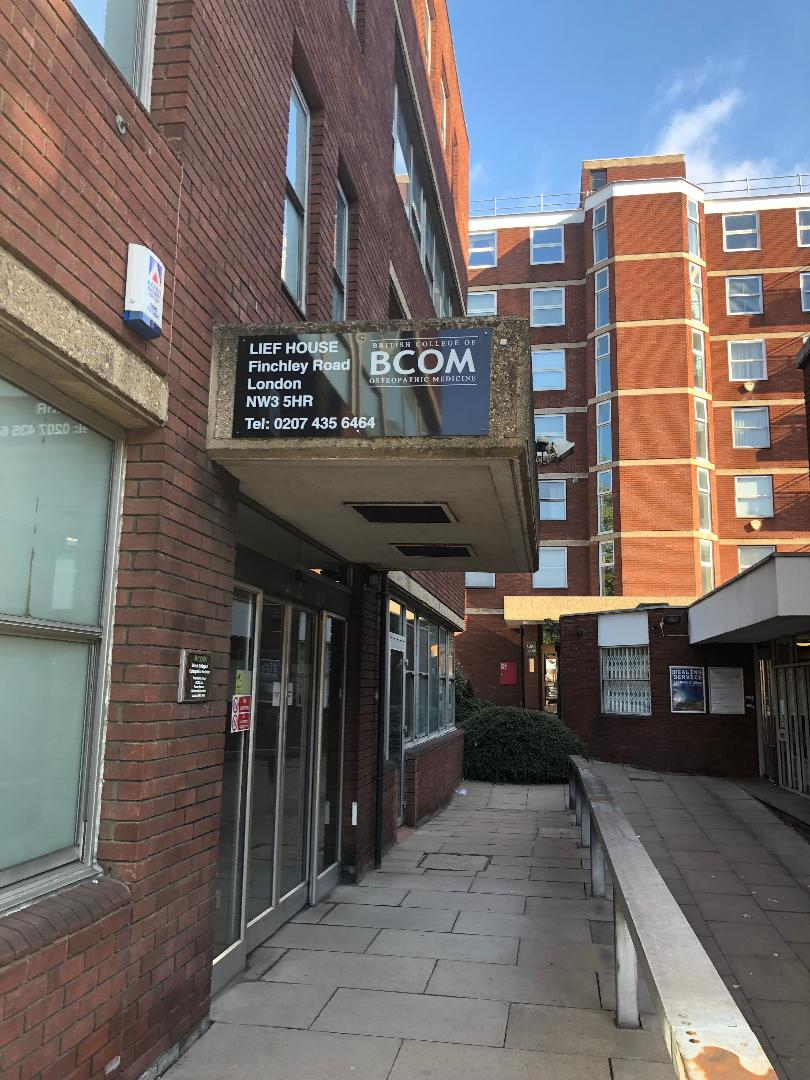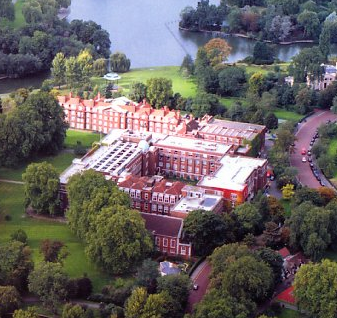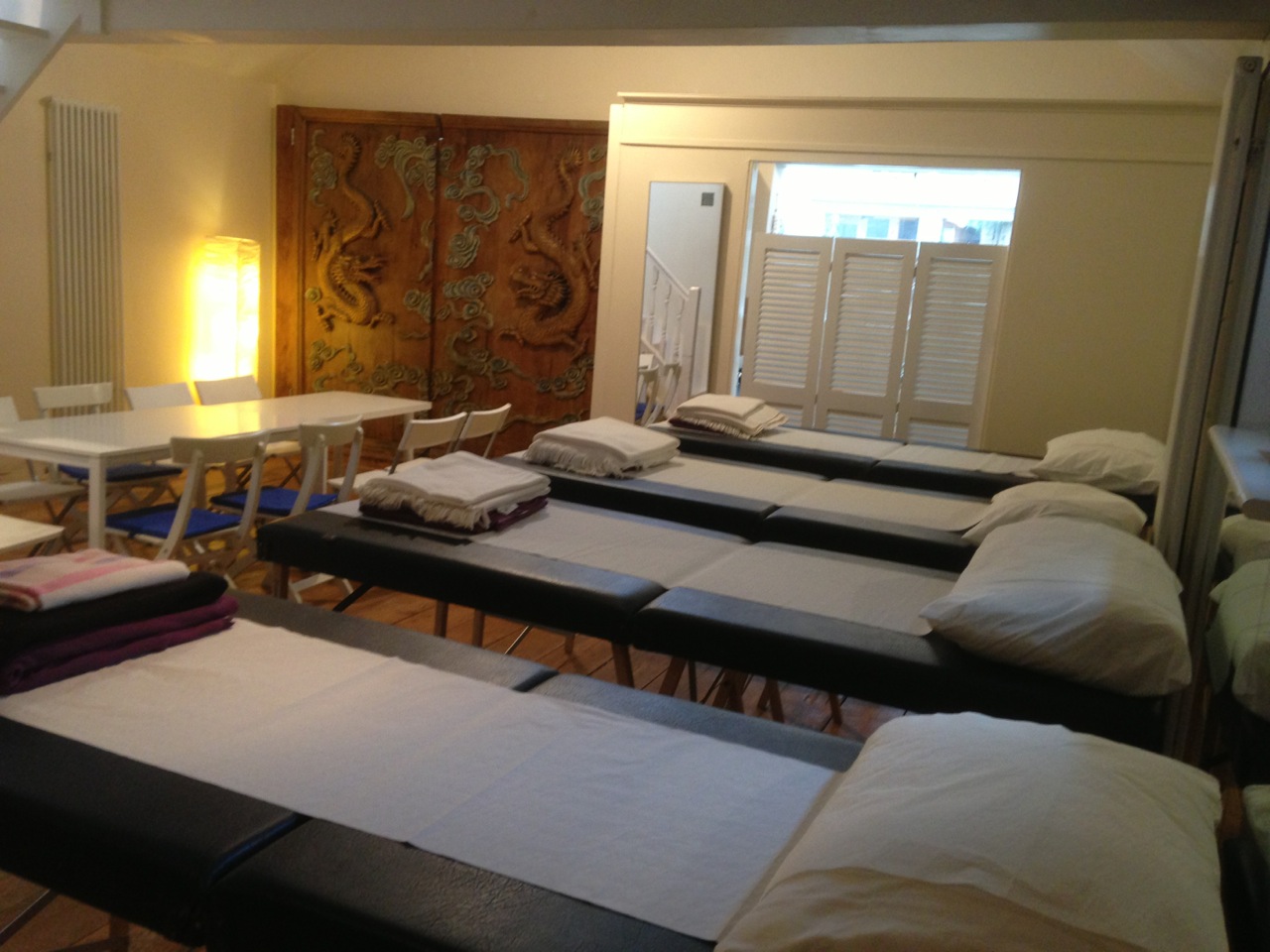Orthopaedic Acupuncture Exam and Certification
CCM Certification >
Sports and Orthopaedic Acupuncture Diploma Courses
6 Month Weekend Sports and Orthopaedic Acupuncture course dates in West London:
1. 4, 5 & 6 October 2025
2. 1, 2 & 3 November 2025
3. 30 November, 1 & 2 December 2025
4. 17, 18 & 19 January 2026
5. 7, 8 & 9 February 2026
6. 7, 8 & 9 March 2026
7. 28, 29 & 30 March 2026
Course Outline
This is a post-graduate course composed of a TCM and Acupuncture Theory Foundation Module (9 lecture days) and a Special Orthopaedic Acupuncture Module (8 lecture days) with additional 4 clinical practice days and a re-validation day. The TCM and Acupuncture Theory foundation Module leads to a Foundation Diploma in TCM and Acupuncture Level-1. The Orthopaedic Acupuncture module is designed in such a way that it can either be completed as a whole, or each of the 8 lectures can be taken as a CPD unit for therapist with special interests in the specific areas of the body.
The course is specifically designed as an advanced, intensive course for acupuncturists, physiotherapists, osteopaths, chiropractors and other physical therapists who wish to broaden their knowledge and further their skills. The emphasis of the course falls on the practical application of acupuncture as a treatment for a variety of MSK conditions.
The theoretical TCM and Acupuncture Foundation Module is designed to provide sufficient knowledge and understanding of the Acupuncture Meridian System, the points commonly used for MSK problems, as well as TCM pathogenesis, pathology and principles and methods of diagnosis and treatment. It also includes training in needle puncturing, manipulation, moxibustion and cupping, as well as exercises, stretches and other aspects of physical therapy.
The Orthopaedic Acupuncture Module comprises area-specific theoretical and practical sessions, which cover the problems and respective treatments for each of the different areas of the body (i.e. upper back and neck; shoulder; etc.). Each one of these sessions is a complete unit in its own right and can be taken as a separate CPD course.
A Practical Skills Verification Clinical Day takes place 3 months after completion of the course graduates will need to submit 20 written case history notes of clients that they have treated, and demonstrate that they have retained the skills learnt on the course.
Assessment
Achievement of the learning outcomes is assessed by continuous verbal questioning, home assignments, as well as by final on-line multiple-choice questions exam. Students are required to complete 20 case studies (minimum 5 different patients) in the three months prior the Re-validation session. Late submission of the case studies will incur a £100 late examination fee.
Award
Successful graduates will be awarded a Diploma in Orthopaedic Acupuncture and will be entitled to use the initials Dip OA after their names. They are eligible to become members of the Acupuncture Society. The annual membership is £100. Student and professional indemnity cover can also be arranged.
As members of the Acupuncture Society, they are entitled to use the initials MAcS OA after their names.
Course Objectives
By the end of the course students should be able to:
1. Demonstrate usable theoretical knowledge of the Acupuncture Meridian System the 12 main meridians and the 8 extra vessels; the action, location and practical application of their principal points.
2. Put in practical context their Anatomy and Physiology knowledge for the needs of Orthopaedic acupuncture treatment; MSK and nervous systems organisation and function. Posture, gravity and weight bearing the forces, which determine the way the body is designed and the way it functions.
3. Understand the pathology of injury, the real meaning of pain and the different types of pain blood and energy stagnation type, damp, cold, heat or wind type, deficiency of energy type.
4. Demonstrate ability to diagnose: by interrogation asking the relevant questions; by observation body shape, posture, movements; by palpation the muscles and bones/joints of the affected areas as well as the related points and meridians.
5. Execute effective acupuncture treatments for the most common MSK problems neck, upper and lower back; shoulder, elbow and wrist, groin, knee and ankle problems.
The ultimate goal of the course is to prepare confident and proficient practitioners through; correct diagnosis, proper selection and location of points and efficient needle manipulation and to develop a real understanding of the concept of “arrival of Qi†and the achievement of sufficient therapeutic stimulation.
Course Structure
The course consists of a TCM and Acupuncture Theory Foundation Module (9 lecture days), Orthopaedic Acupuncture Module (8 lecture days), 4 clinical practice days and a revision/re-validation day. The TCM and Acupuncture Theory module runs once a month for the first three months on a Saturday, Sunday and Monday. The 8 Orthopaedic Acupuncture lecture days run one weekend per month. The 4 clinical practice days run on the Monday following the Orthopaedic lecture days. The revision/re validation day runs on a Saturday or a Sunday three months after the end of the course lectures.
The Course consists of 120 contact hours (18 Contact Lecture Days) plus 35 Clinical Practice contact hours (4 clinic days and a re-validation day), as well as 310 home study hours.
Modules
Each module comprises seven lecture hours, running from 9.30 am to 5.30 pm, with one-hour lunch break. The Orthopaedic Acupuncture sessions comprise a theoretical part, demonstration, as well as practical (working in pairs) part.
1. TCM and Acupuncture Foundation Module Lectures I IX:
– TCM lectures (5 classes) TCM anatomy, physiology and pathology that is essential for understanding the causes, mechanisms, clinical features, diagnosis and treatment of disorders
– Acupuncture theory lectures (4 classes) - correct understanding of the acupuncture meridian system and the precise location and action of commonly used acupuncture points
2. Orthopaedic Acupuncture Module Lectures X XVII:
X. Back of the leg: Achilles tendon, calf muscle, hamstring; heel problems
Theory section: anatomy, function and meridians/points of the area;
common problems and treatment; demonstration
Practical section: practice in pairs
XI. Lower back and hip
Theory section: anatomy, function and meridians/points of the area;
common problems and treatment; demonstration
Practical section: practice in pairs
XII. Upper back
Theory section: anatomy, function and meridians/points of the area;
common problems and treatment; demonstration
Practical section: practice in pairs
XIII. Neck
– Theory section: pathology and pathogenesis; induction and regulation of spinal and cranial nerves; demonstration
Practical section: practice in pairs
– Revision on whole back and neck
XIV. Upper extremities I: shoulder and upper arm
Theory section: anatomy, function and meridians/points of the area;
common problems and treatment; demonstration
Practical section: practice in pairs
XV. Upper extremities II: elbow and wrist
Theory section: anatomy, function and meridians/points of the area;
common problems and treatment; demonstration
Practical section: practice in pairs
XVI. Lower extremities I: knee, thigh and groin
Theory section: anatomy, function and meridians/points of the area;
common problems and treatment; demonstration
Practical section: practice in pairs
XVII. Lower extremities II: lower leg, ankle and foot
Theory section: anatomy, function and meridians/points of the area;
common problems and treatment; demonstration
Practical section: practice in pairs
3. Clinical Practice days 4 Mondays
Further practical work in pairs, improving point location and needling. Work under supervision on patients in the Student clinic.
4. Revision/re-validation day
The revision/re validation day runs on a Saturday or a Sunday three months after the end of the course lectures. It covers discussion of students’ case studies encountered problems and achievements.
After successfully completing your course there is a £30 certification charge
Teacher: Dragomir Lubomirov FAcS MPCHM
Contact Dragomir on
dragomirl@btinternet.com or 0797 6253 682 for the course on the above dates
Admission Requirements
The course is designed as an advanced, intensive course for sports, massage and other physical therapists, as well as acupuncturists, Osteopaths, Chiropractors, Physiotherapists, Doctors and other state registered Health Professionals. The applicants must have completed at least an ITEC level 3 Anatomy & Physiology (or equivalent) previous training. Adequate knowledge of Anatomy & Physiology is essential.
Course Cost
The course fee is £2500*
It includes:
- 17 lectures plus a validation day (3 months after end of lectures)
- 4 Clinical practice days
- Course Textbooks (electronic version)
- Lecture presentations
- Exam fees
After successfully completing your course there is a £30 certification charge
*To reserve a place there is a £400 deposit. The balance of £1600 is payable in up to three monthly instalments.
Enrolment
Please submit this form and the course tutor will respond to your email to inform you of whether you have been accepted. If you have any queries about this course please contact Dragomir on 07976253682 or email: dragomirl@btinternet.com
Dragomir Lubomirov 6 Months Orthopaedic Acupuncture Courses Application Form
—————————————————————————–
1 year Orthopaedic Body with Microsystems Acupuncture Diploma Course
(including Traditional, Paraspinal, Auricular, Abdominal, Korean Hand, Scalp & Cosmetic Acupuncture, Traditional Chinese Diagnosis, Facial Cupping and Gua Sha)
Teacher: Paul Robin FAcS MPCHM MCAA
Locations:
Central London
Duration: 1 year over 40 x Thursday mornings per month
Central Edinburgh:
10 x 1 Monday/Tuesday per month course over 1 year
contact hours: 160
Home study hours: 320
Modular course so you can start in any month
Qualification:
1-year Orthopaedic & Microsystems Acupuncture Diploma
Fee: £2500
Deposit: £900
After successfully completing your course there is a £30 certification charge
Contact Paul Robin for course dates, content and prices on 07734 668402 or acusoc@yahoo.co.uk
Click the below link for the application form for Paul Robins Classes:
Paul Robin 1 Year Orthopaedic Acupuncture with Microsystems & TCM Diagnosis Courses Application Form
 Outline Return to Top ↑
Outline Return to Top ↑
This is a post-graduate course composed of 12 one-day modules. Each of the modules is designed as a specific CPD unit, so the whole course can be completed as an accumulation of the individual modules over one or more years.
The course is specifically designed as an advanced, intensive course for acupuncturists, physiotherapists, osteopaths, chiropractors and other physical therapists, who wish to broaden their knowledge and further their skills. The emphasis of the course falls on the practical application of acupuncture as a treatment for a variety of musculo-skeletal conditions.
The course includes a general theoretical section, comprising four modules, which serves as a foundation for the specific clinical section modules, and is essential for any non-acupuncture practitioner. The theoretical section is designed to provide sufficient knowledge and understanding of the Acupuncture Meridian System, the points commonly used for musculo-skeletal problems, as well as TCM pathogenesis, pathology and principles and methods of diagnosis and treatment. It also includes training in needle puncturing, manipulation, moxibustion and cupping, as well as exercises, stretches and other aspects of physical therapy. The remainder of the course comprises area-specific clinical modules, which cover the problems and respective treatments for each of the different areas of the body (i.e. upper back and neck; shoulder; etc.). Each one of these modules is a complete unit in its own right and can be taken as a separate CPD course.
Successful graduates will be awarded a Diploma in Orthopaedic Acupuncture and will be entitled to use the initials Dip OA after their names and will be accepted as a members of the Acupuncture Society. (annual membership £100 and student and professional indemnity cover cover can also be arranged)
Members of the Acupuncture Society, and are entitled to use the initials MAcS OA after their names.
Contact Days including extra Skills Verification day 13 (contact hours 104)
Recommended Home Study, Case Histories and research hours 222
Clinic Practice, Experience, Skills Verification hours during course 72
A Practical Skills Verification Clinical Day takes place 3 months after completion of the course graduates will need submit 10 written case history notes of clients that they have treated, and demonstrate that they have retained the skills learnt on the course. There will be an additional charge of £100 per graduate.
 Content Return to Top ↑
Content Return to Top ↑
Course Objectives
1. To give usable theoretical knowledge of the Acupuncture Meridian System – the 12 main meridians and the 8 extra vessels; the action, location and practical application of their principal points.
2. To put in practical context Anatomy and Physiology knowledge for the needs of Orthopaedic acupuncture treatment; musculo-skeletal and nervous systems – organisation and function. Posture, gravity and weight bearing – the forces, which determine the way the body is designed and the way it functions.
3. To understand the pathology of injury, the real meaning of pain and the different types of pain – blood and energy stagnation type, damp, cold, heat or wind type, deficiency of energy type.
4. To develop the ability to diagnose: by interrogation – asking the relevant questions; by observation – body shape, posture, movements; by palpation – the muscles and bones of the affected areas as well as the related points and meridians.
5. To master the practical application of acupuncture for the most common musculo-skeletal problems – neck, upper and lower back; shoulder, elbow and wrist, groin, knee and ankle problems. To become a confident and proficient practitioner through; correct diagnosis, proper selection and location of points and efficient needle manipulation and to develop a real understanding of the concept of “arrival of Qi” and the achievement of sufficient therapeutic stimulation.
 Modules Return to Top ↑
Modules Return to Top ↑
Each module comprises seven lecture hours, running from 10 am to 6.00 pm, with one hour lunch break. The Special section modules comprise a theoretical part, demonstration, as well as practical (working in pairs) part.
General Theory Section
I. Introduction to TCM and acupuncture theories the Zhang-Fu; blood, qi and other vital substances; pathogenesis and pathology; the acupuncture meridian system and important acupuncture points
II. Needle manipulation
– Theory section: needle puncturing; types of reducing and reinforcing needle manipulations; electro-stimulation; demonstration
– Practical section: individual practice on needle cushions; practising needling on each other
III. Musculo-skeletal medicine from TCM perspective aetiology, pathology, principles and methods of diagnosis and treatment. General acupuncture and herbal treatment, moxibustion and cupping
IV. The physical body from TCM perspective posture, exercises and training, stretching, mobilisation, rest and diet/nutrition
– Practical section: stretching in pairs and by oneself; basic standing and posture training; practising moxibustion and cupping
Special Section
V. Back of the leg: Achilles tendon, calf muscle, hamstring; heel problems
– Theory section: anatomy, function and meridians/points of the area;
common problems and treatment; demonstration
– Practical section: practice in pairs
VI. Lower back and hip
– Theory section: anatomy, function and meridians/points of the area;
common problems and treatment; demonstration
– Practical section: practice in pairs
VII. Upper back and neck
– Theory section: anatomy, function and meridians/points of the area;
common problems and treatment; demonstration
– Practical section: practice in pairs
VIII. Upper extremities I: shoulder and upper arm
– Theory section: anatomy, function and meridians/points of the area;
common problems and treatment; demonstration
– Practical section: practice in pairs
IX. Upper extremities II: elbow and wrist
– Theory section: anatomy, function and meridians/points of the area;
common problems and treatment; demonstration
– Practical section: practice in pairs
X. Lower extremities I: knee, thigh and groin
– Theory section: anatomy, function and meridians/points of the area;
common problems and treatment; demonstration
– Practical section: practice in pairs
XI. Lower extremities II: lower leg, ankle and foot
– Theory section: anatomy, function and meridians/points of the area;
common problems and treatment; demonstration
– Practical section: practice in pairs
XII: Neurological problems: paralysis, stroke, Bells palsy, muscle wasting
– Theory section: pathology and pathogenesis; induction and regulation of spinal and cranial nerves; demonstration
– Practical section: practice in pairs
Course content:
Acupuncture for the treatment of the following orthopaedic conditions:
Lower Extremities Back
Achilles tendon strain; tendinosis; peritenonitis; bursitis; rupture
Calf strain of Gastrocnemius and Soleus; compartment syndrome
Hamstring strain or rupture of Bicep Femoris or Semitendinosus/Semimembranosus; ITB band tension and bursistis
Heel arthritis; fracture.
Lower Extremities Front
Knee joint Quadriceps tightness/stiffness shortening and strain, patella tendinitis, bursitis, dislocation, instability and arthritis, external ligaments, sprain, meniscus tears, ACT and PCT sprains and rupture; arthritis and instability
Groin, Adductor strains and ruptures; hernia
Anterior compartment syndrome
Shin splints
Fractures of femur, tibia and fibula
Ankle, tendon and retinaculae strains, ligament sprains, fractures and arthritis.
Lower Back & Hip
Lumbar muscle strain; lumbar ligament sprain; facet joint dislocation
Discopathies and other spinal nerve entrapment
Spondylosis; spondylolysis and spondylolisthesis; vertebrae fracture; lumbar spine arthritis
Hip joint, Piriformis and Gluteus stiffness/tension, shortening and strain; sacroiliac joint dysfunction; fracture of head of femur, arthritis and instability; Iliopsoas dysfunction.
Neck & Upper Back
Upper back and neck stiffness and tension
Ilio-costalis, semispinalis and longisimus strain
Whip lash and torticollis
Discopathies and other spinal nerve impingement
Spondylosis; vertebrae fracture; arthritis.
Upper Extremities
Strains, tendonitis and ruptures of Deltoid, Biceps, Triceps, Supraspinatus and rotator cuff
A/c joint dislocation; clavicle fracture
Impingement syndrome, bursitis
Partial and complete shoulder dislocation; shoulder instability
Frozen shoulder and arthritis
Elbow tendinitis, bursitis and strains – tennis elbow; golfers elbow; posterior elbow injuries
Elbow restriction; dislocation; instability and arthritis
Wrist sprains, instability, weakness and arthritis
Carpal tunnel syndrome, RSI
Fractures of humerus, radius, ulna and carpal bones
 Admission Requirements Return to Top ↑
Admission Requirements Return to Top ↑
Osteopaths, Chiropractics, Physiotherapists, Doctors, Nurses, State registered Health Professionals or Sports massage and Shiatzu, Tuina Therapists with Anatomy and Physiology level 3.
PLEASE READ OUR TREATMENT SAFETY CHECK LIST BELOW BEFORE ATTENDING CCM COURSES:
The list below is a student safety guide used prior undertaking a CCM course. We aim to protect the health and safety of students in training and also those they practise on during and after the course.
If you suffer from any of the conditions listed below or other conditions which have not been included that you feel are relevant, please inform us prior to class treatments so that we can assess you suitability for such treatment.
Where there is any doubt please consult your GP.
– A recent operation
– An untreated medical condition
– Severe Bone or joint disorders (Rheumatoid/Osteoarthritis, osteoporosis)
– Cardiovascular disorders (high blood pressure, heart / circulatory disease, thrombosis)
– Diabetes
– Endocrine disorders
– Epilepsy
– Drug addiction or recent use of cocktails of recreational and prescribed drugs and or exessive alcohol consumption
– Medication
– Pregnancy (or post natal)
– Severe skin disorders
– Severe mental illness
– Spinal injuries
– Prone to fainting
– If you suffer from infectious diseases like hepatitis b or HIV
You must also have eaten about 2 hours prior to treatment (please inform tutor if you haven’t
– If there anything else we should know about your health, please let the tutor know.
– The same proceeding is required prior to treating your clients or during assignments
 Fee
Fee
-
Cost of Dragomir’s 6 Months Orthopaedic Acupuncture Only Course: £1800
-
- It includes: 12 lectures (6 monthly weekends) plus a validation day (3 months after end of lectures)
-
- Contact hours: 104
-
- £200 deposit to reserve a place
- The balance of £1600 is payable in up to three monthly installments payable to Dragomir Lubamirov
-
- Contact hours: 104
- Qualification: Diploma in Orthopaedic Acupuncture
- Contact Paul Robin for Fees and Content of the Orthopaedic Acupuncture Course which takes place on Thursdays at the College Teaching Clinic
After successfully completing your course there is a £30 certification charge
Click here for Orthopaedic Acupuncture Diploma Certification
Membership to the Acupuncture Society is available to graduates
(upon paying the annual membership fee of £100)
http://www.acupuncturesociety.org.uk/application-form.php
(Please note that course fees are non-refundable)
Fees are directly payable by chq’s made out to your course tutor account
CCM cannot accept payment on behalf of each individual tutor
 Tutor Return to Top ↑
Tutor Return to Top ↑
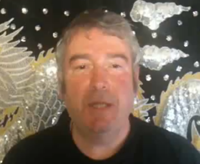
Paul Robin FAcS MPCHMMCAA
Head of the College of Chinese Medicine TCM faculty Chairman of the Acupuncture Society
Paul Robin has been teaching and practising Traditional Chinese medicine for over 25 years. He was trained in the Fook Sang style by Dr Ac Bernard Kai Lam Lee (who was a TCM specialist brought over from China by the British Acupuncture Association) and qualified in 1987. Paul was Dr Lees full time apprentice and assistant for 9 years during which time he conducted research and lectured at the Fook Sang courses held at Imperial College and was President of the Fook Sang Acupuncture and Chinese Herbal Practitioners Association.
In 1994 Paul founded the College of Chinese Medicine and some years later founded the Acupuncture Society in order to establish Chinese style Acupuncture and Chinese Medicine in the UK.
Paul specializes in Spinal, Traditional and Chinese Medical Style Deep Needling Acupuncture, Traditional Chinese Diagnosis and complex Chinese Herbal formulations.
He represents the Acupuncture Society in the Acupuncture Stakeholders Group which is working with leading members of the profession toward the future regulation of Acupuncture and Chinese Herbal Medicine and preparing for the professions inclusion into the NHS.
Paul lectures at the College of Chinese Medicine and is also a specialist TCM consultant at the Clinic of the College of Chinese Medicine in Harley Street.
Acupuncture Society Enrollment Form
 Tutor
Tutor
Dragomir Lubomirov FAcS MPCHM
Vice Principal of the College of Chinese Medicine
Chair of the CCM Academic board 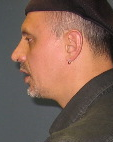
Email: dragomirl@btinternet.com
Tel. +44 7976 253682
Dragomir is a fully trained and insured practitioner of Traditional Chinese medicine, acupuncture and acupressure massage, which he has practiced successfully since 1997. He has a Masters Degree in Clinical Neuroscience. He is a Fellow of the Acupuncture Society, one of the main professional organisations representing TCM and acupuncture practitioners in the UK. The Acupuncture Society is an active member of the Acupuncture Stakeholder Working Group set by the DoH to map the future of the acupuncture profession in the UK.
Dragomir is the Vice-Principal of CCM London since 2003 and a senior lecturer at the College. Based on his sports, martial arts, massage and acupuncture experience, he developed and has been teaching the Advanced Acupressure Massage Course at the College since 2000 both in the UK and abroad. At the College he teaches the Auricular Acupuncture for drug and alcohol rehabilitation and stress management, Acupuncture Meridian stretch, TCM Orthopaedic diagnosis and Orthopaedic and TCM Musculoskeletal medicine Acupuncture courses.
His professional interests are:
neural and anatomical correlates of the acupuncture meridian system
multi-layered inter connectivity of the neuro-axis and especially the spinal inter-sentimental connectivity
stimulation-based approaches to body regulation and healing
traditional and modern technological methods of stimulation of acupuncture points
exercise as treatment for musculoskeletal, mental/emotional and general health problems as well as health enhancement, learning and personal development
For more information about this course please contact Dragomir Lubomirov: Tel. 07976253682 or email: dragomirl@btinternet.com
Course also includes:
Full Copies of lecture content, Certification, Acupuncture needles, all other course materials and graduate membership of the Acupuncture Society (all graduates are expected to comply with the Societies code of ethics, fully verified professional membership status requires annual submission of insurance CPD log and other relevant documents)
 Application Form
Application Form Enroll
Enroll
Return to Top ↑
Please click Enroll above to submit this application form and the course tutor will respond to your email to inform you of whether you have been accepted. If you have any queries about this course please contact:
6 month course West London: Contact dragomirl@btinternet.com or 0797 6253 682
1 year course Central London:
Contact Paul Robin on 07734 668402 or acusoc@yahoo.co.uk
 Acupuncture Society membership Return to Top ↑
Acupuncture Society membership Return to Top ↑
Successful graduates from this course can apply for membership of the Acupuncture Society are entitled to use the abbreviations MAcS OA after their names the society can also arrange professional indemnity insurance at a very competitive members preferential rate
all members must be insured and log 15 hours of CPD per year (8 hours courses/seminars/workshops and 7 hours home study/research)
Acupuncture Society Application Form
if they join the Society and adhere to its code of ethics rules and regulations and supply copies of their insurance.
Acupuncture Society members are exempted from Local Authority Licensing in many areas including Greater London please check with your local authority.
The annual membership to the Acupuncture Society is £100
